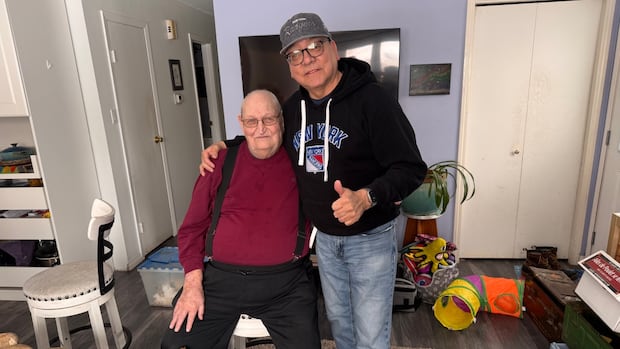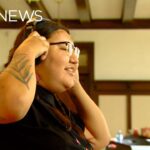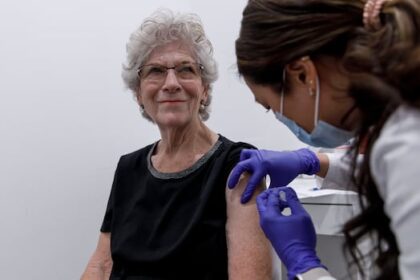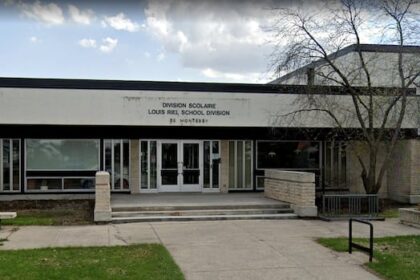SaskatchewanA Cut Knife, Sask., man has donated dozens of Indigenous artifacts — some believed to be thousands of years old — to the Chief Poundmaker Museum and Gallery, in Poundmaker Cree Nation, saying the items deserved to “come home” to the community.’We decided we’d send it home,’ says Cut Knife, Sask., man who collected items in area over decadesChris Edwards · CBC News · Posted: Oct 05, 2025 6:00 AM EDT | Last Updated: October 6Andy Whiteman, left, donated dozens of artifacts to the Chief Poundmaker Museum and Gallery on Saturday. He’s seen here with Milton Tootoosis, a former student who is now the chief economic reconciliation officer for the Saskatoon Regional Economic Development Authority. Reconnecting after several decades helped start the repatriation process, says Tootoosis. (Submitted by Andy Whiteman)A Cut Knife, Sask., man has donated dozens of Indigenous artifacts — some believed to be thousands of years old — to the Chief Poundmaker Museum and Gallery, saying the items deserved to “come home” to the community.The collection, which includes hammers, tomahawks, scrapers and arrowheads, was officially transferred to the museum in Poundmaker Cree Nation, about 15 kilometres northwest of Cut Knife in western Saskatchewan, on Saturday.The items will help bolster the museum’s mission, says curator Floyd Favel.”We’re a bridge between the past — we’re our present and we’re our future,” he said.”We need to keep educating our people and the general public as best as we can, with the most information that we have, in order to create a true and more detailed, fleshed-out cultural legacy for our people and for all Canadians.”Favel said all of his museum’s artifacts are the product of donations, and that the process is ongoing.Whiteman says he collected many of the items by exploring the area near his home in Cut Knife, Sask. (Submitted by Andy Whiteman)”We’re told by researchers in this space that there are numerous other items that belong to Poundmaker, or [are] attributed or linked to Chief Poundmaker and other Cree tribal peoples in various collections throughout the world,” he said.Chief Poundmaker, whose Cree name is Pitikwahanapiwiyin, was a Plains Cree leader who was wrongly imprisoned for treason-felony after the Northwest Resistance in 1885, even though he did not join the conflict. He was exonerated in 2019 by then prime minister Justin Trudeau.During the Battle of Cut Knife in 1885, Chief Poundmaker stopped his warriors from chasing retreating Canadian forces, preventing the deaths of hundreds of troops.’He’s been a great friend of our area’The items donated Saturday were collected over decades by Andy Whiteman, who says he accumulated them mainly by wandering through hills near his home in Cut Knife.”And we did that with the permission of the elders ” he said. “It was the elders that told me where to go to get this stuff.”He acquired more items after travelling to different classrooms and youth groups, and connecting with others who wanted to contribute to his collection.Whiteman, who is not Indigenous but worked as a school teacher in Cut Knife for 35 years, said his family felt a strong connection with the Poundmaker Cree Nation community and wanted to repatriate the items.”We decided we’d send it home, we’d take it home. That’s why it’s going to the Poundmaker reserve,” he said.WATCH | Ancient artifacts returned to Poundmaker Cree Nation: Ancient artifacts returned to Poundmaker Cree NationAfter years in the hands of a private collector in Saskatchewan, dozens of artifacts are being transferred to Poundmaker Cree Nation.Milton Tootoosis, who was raised in Poundmaker Cree Nation and is now the chief economic reconciliation officer for the Saskatoon Regional Economic Development Authority, said Whiteman’s donation shows a commitment to preserving the heritage of his community.”He was approached by museums and other archaeologists and collectors for … [the items], and he refused to turn them over. And he said, ‘These are not yours,'” said Tootoosis. “He said, ‘I’m just the keeper, and it’s now to come back to the Indigenous peoples, the rightful owners, and they shouldn’t be sitting in an institution like the Royal Saskatchewan Museum. They should be on the land where they came from.'”Both Favel and Tootoosis were once students of Whiteman’s, which is how they were able to connect with him to begin the repatriation process.”He’s been a great friend of our area,” said Tootoosis. “He was one of our favourite high school teachers, and there weren’t many back in the day.”Whiteman said he looked forward to explaining the origin of some of the items when he presented them on Saturday.”I’m really excited to tell some of the story. I’d like to get it known, so that it will bring in some of the people to get to know the people of Poundmaker.”ABOUT THE AUTHORChris Edwards is a reporter at CBC Saskatchewan. Before entering journalism, he worked in the tech industry.
Wednesday, 17 Dec 2025
Canada – The Illusion
Search
Have an existing account?
Sign In
© 2022 Foxiz News Network. Ruby Design Company. All Rights Reserved.
You May also Like
- More News:
- history
- Standing Bear Network
- John Gonzalez
- ᐊᔭᐦᑊ ayahp — It happened
- Creation
- Beneath the Water
- Olympic gold medal
- Jim Thorpe
- type O blood
- the bringer of life
- Raven
- Wás’agi
- NoiseCat
- 'Sugarcane'
- The rivers still sing
- ᑲᓂᐸᐏᐟ ᒪᐢᑿ
- ᐅᑳᐤ okâw — We remember
- ᐊᓂᓈᐯᐃᐧᐣ aninâpêwin — Truth
- This is what it means to be human.
- Nokoma











